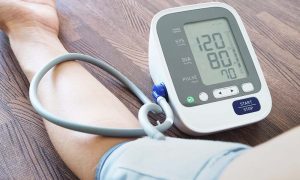- The best home remedies to get rid of a sinus infection include using a warm compress or humidifier.
- Also, try breathing in steam or using a neti pot to help clear congestion and ease stuffiness.
- And like with any illness, staying hydrated and getting plenty of sleep is crucial to help you heal.
Sinus infections are one of the main reasons for doctor’s visits in the US, and also one of the most common illnesses for antibiotic prescriptions.Related Article Module: Are sinus infections contagious? No, but an underlying virus can be
However, many sinus infections can clear up on their own, without antibiotics. If you have a sinus infection, there are various home remedies you can try for relief.
What is a sinus infection?
Sinusitis is the medical term for inflammation of the sinus cavities that are located in your cheeks, behind your forehead, and on either side of your nose. The inflammation traps mucus inside your sinuses, preventing the natural flow from the back of your throat to your stomach.
When this is caused by bacteria or viruses, it is called a sinus infection. However, sinusitis can also be caused by chronic allergies or nasal polyps.
The common symptoms of a sinus infection include:
- Pain and pressure around your forehead, eyes, nose, and cheeks
- Thick nasal discharge
- Reduced senses of smell and taste
More severe symptoms can include:
- A fever over 101 degrees Fahrenheit
- Eye swelling
- Nausea and vomiting
If you experience these severe symptoms, you should seek medical attention.
If your symptoms are not severe, the following home remedies may be all you need to relieve the pain and pressure of a sinus infection.
1. Try a warm compress
Applying a warm, moist towel or washcloth to your nose, cheeks, and eyes may help relieve sinus pain by opening up your nasal passages and loosening mucus. You can try doing this for up to 20 minutes at a time, as needed.
Although there are no scientific studies showing the effectiveness of this method, “if somebody feels that a warm compress provides them symptomatic relief without burning their skin, by all means, go ahead and do it,” says Ralph Abi Hachem, MD, assistant professor of head and neck surgery and communication sciences at Duke University School of Medicine.
2. Invest in a humidifier
Humidifiers add moisture to the air, which may help reduce inflammation and open up your nasal passages. For a humidifier to be the most effective, Abi Hachem says it should be placed as close as possible to you in the same room so it can deliver the humidity into your nasal cavity.
It’s also important to keep your humidifier clean to prevent bacteria and fungi from building up in the tank and being released into the air, potentially causing lung problems. To clean your humidifier, follow the manufacturer’s instructions. The EPA recommends that you empty the tank and dry all surfaces of the humidifier every day.
3. Breathe in steam
Similar to a humidifier, breathing in hot, moist steam can help open up your nasal passages and relieve pain and pressure. You can breathe in straight steam or try some herbs to thyme, basil, and eucalyptus to boost symptom relief.
You can try steam inhalation in a couple of ways:
Steam therapy
For steam therapy, you can simply take a hot shower and inhale the steam. Another method is to drape a towel over your head and inhale the steam from a bowl of hot water for about 10 minutes, up to four times a day.
However, a 2012 article in the British Journal of General Practice notes that this method has no proven benefit and may risk burn injuries, especially for children.
Steam vaporizer
Another option is to use a steam vaporizer that uses electricity to heat water and create steam.
“If you have very thick mucus, it might help make it thinner,” Abi Hachem says. “You should place it relatively close to you, not in one room when you’re in another room.”
Steam vaporizers should not be used around children or pets, since they could be scalded by the steam or by hot water if it tips over.
Although steam vaporizers aren’t as likely as humidifiers to have a mineral buildup, they should still be cleaned each day by emptying the tank and drying all surfaces.
4. Use a neti pot
You can also rinse and help clear your nasal passages using a neti pot. Known as nasal irrigation, this helps loosen mucus and removes dust, pollen, and other debris.
In fact, a 2016 randomized controlled trial found that nasal irrigation is more effective than steam inhalation for improving the symptoms of sinusitis. Participants who used nasal irrigation daily showed improvement after six months, while participants who used steam inhalation did not show improvement.
To safely use a neti pot, follow these steps:
- Lean over a sink and tilt your head sideways so your forehead and chin are almost level. This will help prevent the solution from flowing from your nose into your mouth.
- Insert the spout into your highest nostril. The solution will drain out through your lower nostril. As you do this, Abi Hachem suggests you say the letter “K” to help elevate your palate and prevent the solution from dribbling down your throat.
- Tilt your head in the opposite direction and repeat these steps.
After each use, rinse the neti pot with distilled water and let it air dry. It’s important to be sure only to use distilled water or tap water that’s been boiled for one minute and then cooled. Tap water contains bacteria that can remain inside your nasal passages and lead to rare, possibly fatal infections.
You can also purchase a saline solution or make your own. Adding salt to the water prevents burning or irritation when the solution passes through your nasal membranes.
5. Drink lots of water and get adequate rest
Related Article Module: How much water are you supposed to drink a day, debunking the 8 cups-a-day myth
“I recommend drinking a lot of water because it thins the mucus,” Abi Hachem says. While there’s no evidence about the most effective quantity, he recommends drinking at least eight eight-ounce glasses of water each day.
You can also try drinking hot liquids like tea or soup to temporarily help relieve your symptoms. But you should avoid drinking alcohol, as it’s dehydrating and can worsen your congestion. If you’re taking an antibiotic for your sinus infection, drinking alcohol could increase side effects like upset stomach and drowsiness.
It’s also important to get about seven to nine hours of sleep each night to help your body rest and recover. “You want to get enough sleep and follow a normal sleep cycle so that all the hormones in your body are maxing out your immune system function,” Abi Hachem says.
Because getting a good night’s sleep can be difficult due to the pain and congestion, you can do the following to help you get more rest:
- Use a neti pot before going to bed to help clear your nasal passages.
- Sleep with your head raised by an extra pillow to help prevent mucus from pooling in your sinuses.
Insider’s takeaway
It’s important to note that while these home remedies may help relieve your symptoms, they won’t help your sinus infection clear up any faster. If your symptoms last longer than 10 days, you should see a doctor.
Your doctor may also recommend prescription medication, like antibiotics or decongestant sprays, as well as over-the-counter pain relievers like Tylenol (acetaminophen) or Advil (ibuprofen).25 immune-boosting foods, and more tips, to help you fight the common cold 8 of the best home remedies to soothe a cough naturally, according to doctors The flu vaccine isn’t 100% effective, but experts recommend you still get it every year The flu is highly contagious, especially in the first 4 days





































